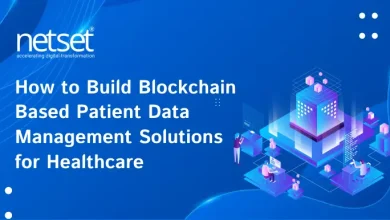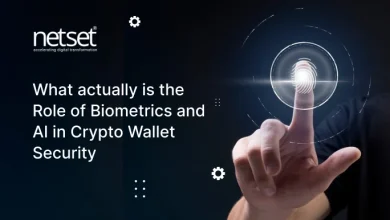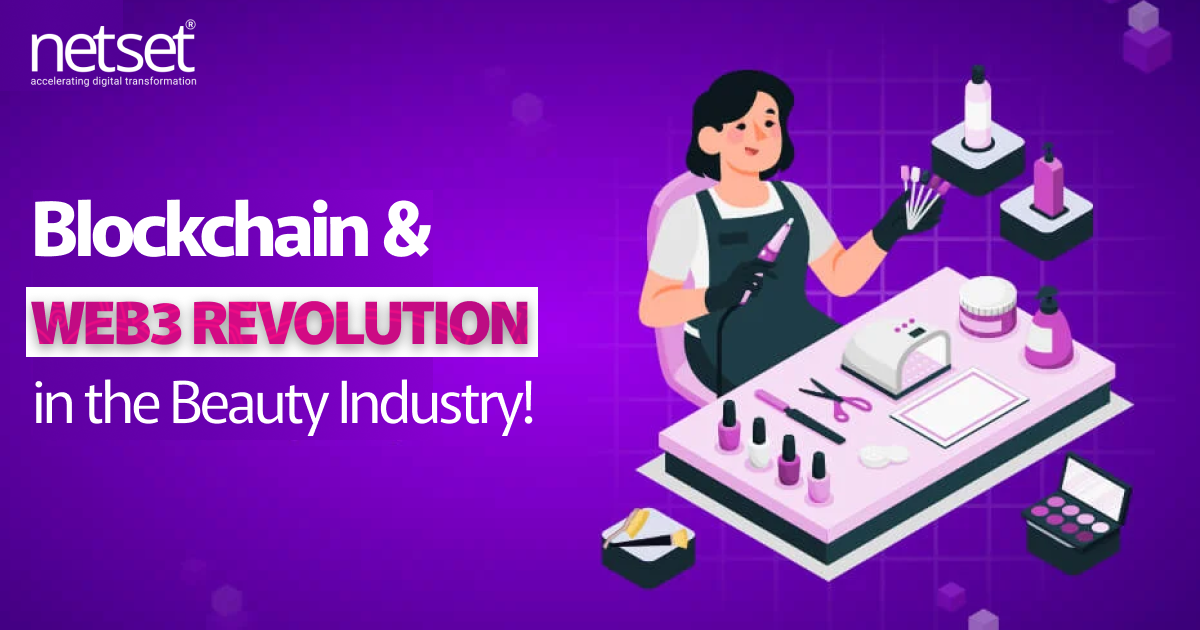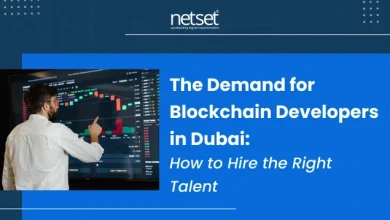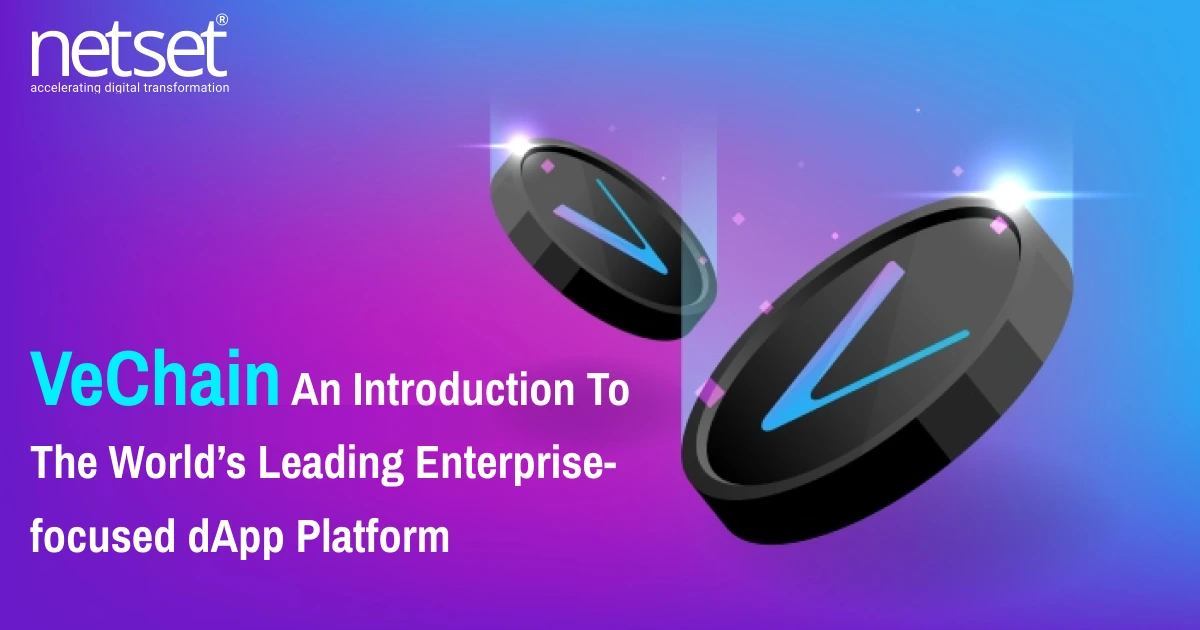How to Create Enterprise Blockchain Solutions Using Hyperledger Fabric
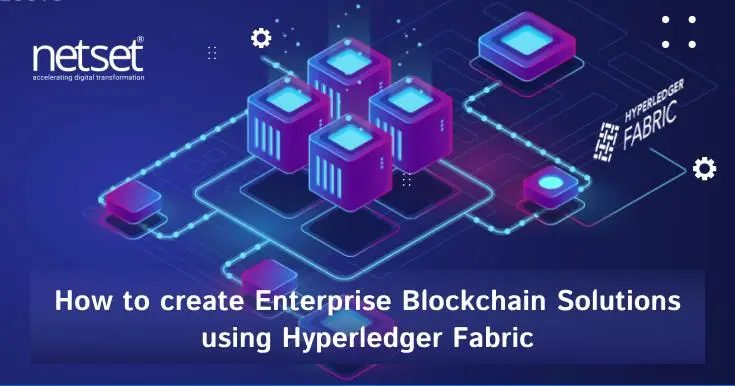
If you look back a few years ago and compare it with the present, you will notice that blockchain technology has undergone a big transformation. It has become a foundation of cryptocurrencies, and there are a lot of businesses that use it to improve their security, transparency, and efficiency. Although there are many tools, one powerful tool that helps businesses create their blockchain networks is Hyperledger Fabric. This open-source framework is created especially for enterprise use.
So, how can you create an enterprise blockchain solution for your enterprise using Hyperledger Fabric? Let’s take a deep dive into this detailed guide that will help your enterprise succeed with blockchain.
Understanding Hyperledger Fabric in brief
In 2015, the Linux Foundation built the Hyperledger Fabric framework, which could be used to create a permissioned blockchain network for enterprises. It is not open to everyone like Bitcoin or Ethereum. Rather, it only authorizes participants who can join the network. This makes it perfect for businesses that need to share data with trusted partners, keeping the security strongest.
Here are a few of the key features of Hyperledger Fabric:
- Permissions Network, where only selected members can join.
- Modular architecture where you can choose the parts you want, like consensus methods or membership services
- Business logic is written in chaincode that runs within the network. We often know it as Smart contracts.
- Private channels where groups can have private conversations that others on the network cannot see.
Some of the key industries like fintech, healthcare, and supply chain make use of these strong features, making Hyperledger Fabric an ideal choice.
Why Choose Hyperledger Fabric for Enterprise Solutions?
Enterprises need more than just a public ledger because the focus is growing most towards privacy, speed, and scalability. And Hyperledger Fabric is built with this requirement in mind. Some of the businesses choose it because of:
- High security because the network is permissioned, and it prevents unauthorized access. It uses strong identity management and encryption to keep the data safe.
- Customizable, as you can build your solution to meet the exact needs, which is perfect for companies that share highly sensitive data.
- Fast Transactions because, unlike blockchains, Fabric can handle a high number of transactions per second, which is important for business operations.
Steps to Create an Enterprise Blockchain Solution Using Hyperledger Fabric
Now it’s time for us to look at the process of creating a blockchain solution using Hyperledger Fabric. This may sound technical, but we will break it down into simple steps.
Step 1: Asking the right questions of yourself to understand business needs
Before you create the solution, you must ask yourself the following questions:
- What problem are we solving with blockchain?
- Who are the users or partners involved?
- What kind of data are we going to share?
Asking such questions will help you to understand the goals of the solution, which will clear up a lot of things about the business.
Step 2: Plan the structure of the network.
This step typically involves
- Choosing the number of organizations in the network
- Deciding how many peers (nodes) each organization will have.
- Defining access rules for each organization.
This step is very important because it will directly set the foundation of your blockchain network.
Step 3: Setting up the development environment
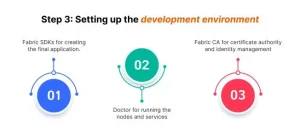
Now you will need a few tools to create your solution, like
- Docker for running the nodes and services.
- Fabric CA for certificate authority and identity management
- Fabric SDKs for creating the final application.
All of these tools are available on the official Hyperledger Fabric website.
Step 4: Create and Configure the Network
This step consists of the following things:
- Creating a genesis block, which is the first block in the blockchain.
- Setting up order nodes to confirm and order transactions.
- Launching peer nodes for storing data and running chaincode.
- Setting up channels for private communication between members.
Every peer will install and join a channel where they can share data with trusted partners.
Step 5: Developing the Smart Contracts
Smart Contracts are the programs that run on blockchain, which is often known as Chaincode within the Hyperledger Fabric ecosystem. For creating smart contracts:
- Be clear with the logic and rules.
- Write the chaincode using the supported programming languages like Go, Java, or JavaScript.
- Test contracts if there are any errors related to security and performance.
- Deploy smart contracts on the channel for peers.
Most of the companies turn to smart contract development services to help write and test these contracts. These services make sure that logic is solid and secure.
Step 6: Deploy and test the network.
After your chaincode development is complete, you install and implement it on your network, and then you test the following:
- Can all peers see the correct data?
- Do transactions work as expected?
- Are access permissions working?
These are some of the elements you can ensure while deploying and testing the network, as they will also help you catch bugs early before the solution goes live.
Step 7: Create a user interface.
Once the backend is working, you can create front-end apps so users can interact with the blockchain.
This can be a website or mobile app, with the following sub-steps:
- Create UI for the web or mobile app
- Connect the front end to blockchain APIs using SDKs
- Test user flows to check if data is flowing correctly through the UI
Step 8: Maintain and update the network.
Once your solution is live, you will still need to
- Monitor performance.
- Fix bugs.
- Update the chaincode as business needs change.
Ongoing support makes sure that your solution constantly delivers value.
Common Use Cases for Hyperledger Fabric in Business
Now let’s quickly take a look at how different industries are making use of Hyperledger Fabric:
- In supply chain management, companies can track products from origin to delivery, where all parties see the same data with reduced fraud and delays.
- For healthcare, it’s possible to share patient data with the best of security between hospitals, labs, and insurers while also following the data privacy laws.
- The banking and finance sector is speeding up settlements and is getting more transparency in lending, insurance, and payments.
- For retail, the tracking of inventory is becoming stronger with product verification right from the origin to the end destination with full transparency.
- The government sector is taking advantage of record management elements like identity, land titles, and taxes with greater trust and efficiency.
Such real-world uses show the power of blockchain in solving everyday business problems.
Need help? Access the extensive blockchain expertise of NetSet Software.
If you are looking forward to creating a powerful and secure blockchain network for your business, then you can consult NetSet Software, a renowned blockchain software development company. We have experts who can provide you with custom Hyperledger development services for enterprises across industries. Whether you want to create a smart contract or a full network setup, the experts can handle everything. Let our developers turn your blockchain idea into a fast, safe, and reliable solution. Get in touch with NetSet Software to hire Hyperledger developers and start creating the solution.
Final Thoughts
We cannot ignore the fact that Hyperledger Fabric is a very strong tool when it comes to creating secure, private, and scalable blockchain networks for businesses. It can support modular design, strong identity controls, and smart contracts that can automate business processes. To succeed with this technology, businesses shall take help from experts because working with the right team matters a lot for the success of the project.
If you are ready to implement blockchain solutions for your business, now is the perfect time to start.
